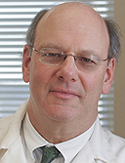Gene Expression
Study of How Genes Activate Yields Surprising Discovery
December 5, 2010 — (BRONX, NY) — Scientists at Albert Einstein College of Medicine of Yeshiva University have made an unexpected finding about the method by which certain genes are activated. Contrary to what researchers have traditionally assumed, genes that work with other genes to build protein structures do not act in a coordinated way but instead are turned on randomly. The surprising discovery, described in the December 5 online edition of Nature Structural and Molecular Biology, may fundamentally change the way scientists think about the way cellular processes are synchronized.
All cells contain protein complexes that perform essential functions, such as producing energy and helping cells divide. Assembling these multi-protein structures requires many different genes, each of which codes for one of the proteins that, collectively, form what’s known as the protein complex. Ribosomes, for example, are the vitally important structures on which proteins are synthesized. (The ribosomes of humans and most other organisms are composed of ribonucleic acid (RNA) and 80 different proteins.) Scientists have long assumed that genes involved in making such complex structures are activated in a highly-coordinated way.
“What we found was rather astonishing,” said Robert Singer, Ph.D., professor and co-chair of anatomy and structural biology, professor of cell biology and of neuroscience at Einstein and senior author of the study. “The expression of the genes that make the protein subunits of ribosomes and other multi-protein complexes is not at all coordinated or co-regulated. In fact, such genes are so out of touch with each other that we dubbed them “clueless” genes.”

Robert Singer, Ph.D.Gene expression involves transcribing a gene’s deoxyribonucleic acid (DNA) message into molecules of messenger RNA, which migrate from the nucleus of a cell into the surrounding cytoplasm to serve as blueprints for protein construction. To assess the coordinated expression of particular genes, Dr. Singer and his colleagues measured the abundance of messenger RNA molecules transcribed by those genes in individual cells. The messenger RNA molecules made by clusters of clueless genes exhibited no more coordination than the messenger RNA from totally unrelated genes did.
The “clueless” genes coding for ribosomes and other multi-protein structures are referred to as housekeeping genes, since their essential tasks require them to be “on call” 24/7, while other gene clusters remain silent until special circumstances induce them to become active. The researchers found that these induced genes, in contrast to the “clueless” housekeeping genes, act in an expected (well-regulated) way. For example, growing yeast cells in nutrient media containing the sugar galactose triggered the highly-coordinated expression of the three genes required to metabolize galactose.
“Our findings show that for a major class of genes – those housekeeping genes that make ribosomes, proteasomes and other essential structures – cells employ very simple modes of gene expression that require much less coordination than previously thought,” said Saumil Gandhi, the lead author of the study. “Those genes become active randomly, with each member of a functionally related gene cluster encoding a protein while having no clue what the other genes in the cluster are doing. Yet the cell somehow manages to deal with this randomness in successfully assembling these multi-protein complexes.”
The paper, “Transcription of functionally related constitutive genes is not coordinated,” appears in the December 5 online edition of Nature Structural and Molecular Biology.
Other Top Stories
9/11 World Trade Center Exposure Linked to Heart Disease Among NYC Firefighters
On Becoming a Physician: New Einstein Students Receive White Coats and Stethoscopes
Novel Therapy for Acute Migraine Shows Promise in Phase 3 Clinical Trial
First Complete Wiring Diagram of an Animal's Nervous System
Multimillion Dollar NIH Grant to Help Reduce Opioid Use & Get Care to People Who Need It
NIH Grant Funds $23 Million Study of Diseases Affecting People Living with HIV
New TAILORx Data Guides Adjuvant Therapy in Younger Breast Cancer Patients
Einstein Celebrates Its 61st Commencement
Bolstering Biopsies: Testing Patients' Individual Cells to Guide Treatment



Tablet Blog